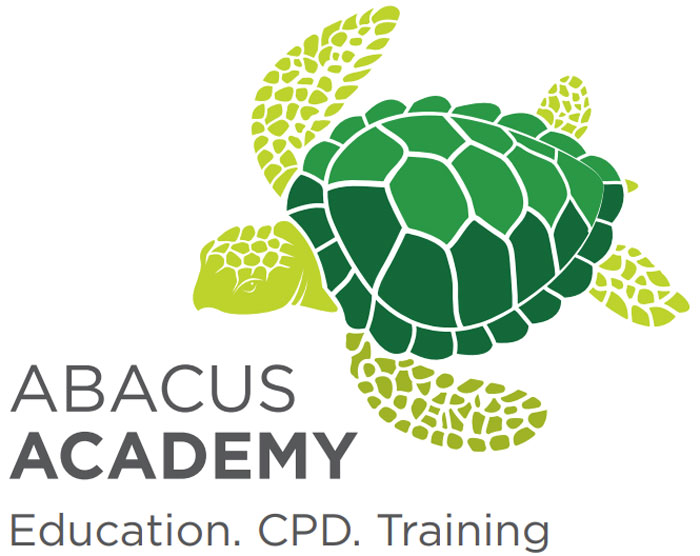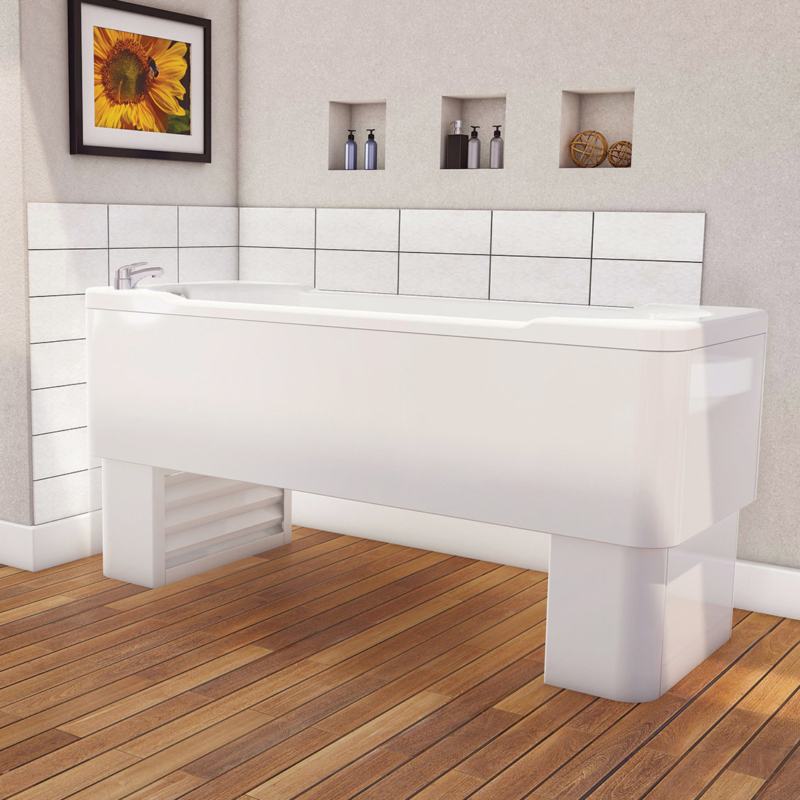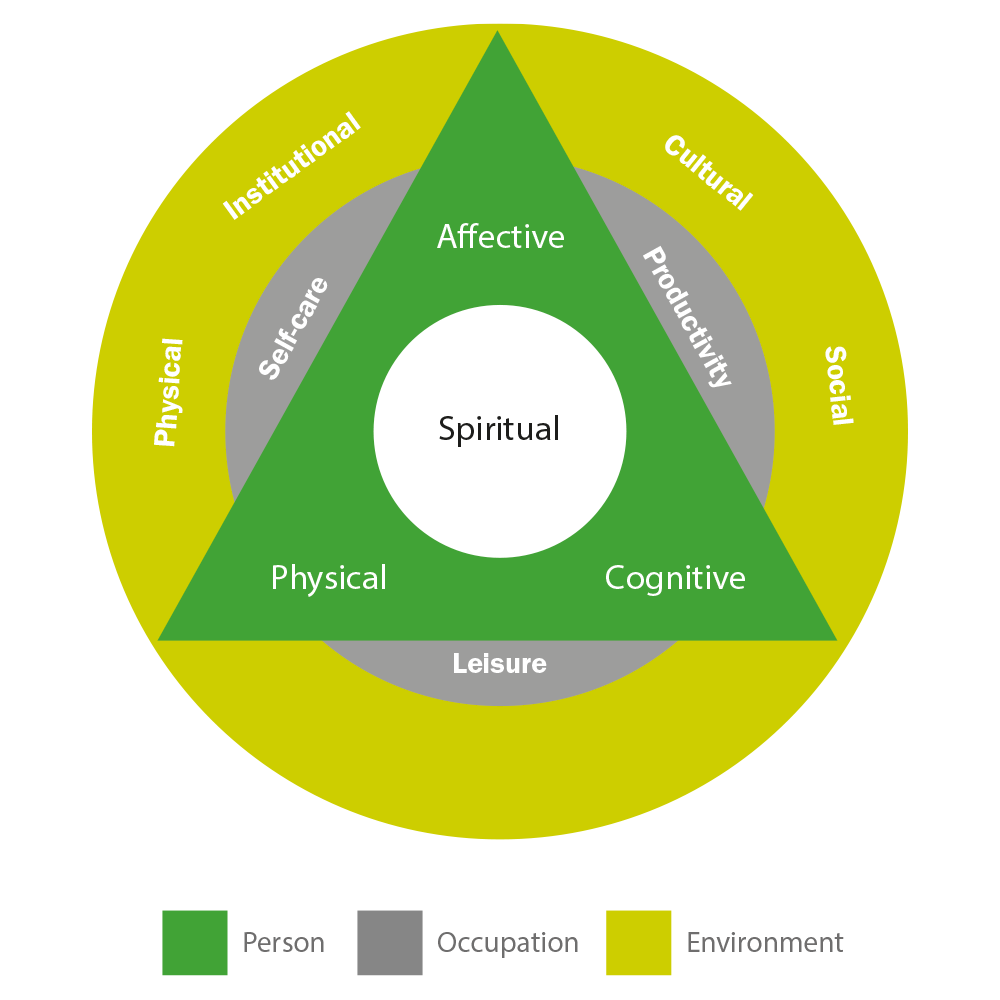Case study 2 – Application of CMOP-E
Background
Ryan is a 12-year-old boy who had a brain injury at birth which resulted in global developmental delay and associated problems with mobility. Ryan is a full-time wheelchair user and his parents have been lifting him for transfers. Ryan is small compared to his peers and although they are aware of the risks, his parents have chosen to continue to lift him.
Lifting and carrying has now become too difficult for his parents to manage and his mum has injured herself on several occasions. Ryan lives in a very busy household with three younger siblings and his parents. The family have recently moved home to a property which has a room suitable for use as a bedroom with an adjacent bathroom. The family were referred to occupational therapy to review the home environment and assist with designing an accessible bathroom and bedroom facilities.
Environmental assessment
At the initial assessment, the occupational therapist was able to meet Ryan and his siblings and gain a thorough understanding of the difficulties they were having. The bathroom on the ground floor is the family bathroom and on the 1st floor there was a very small ensuite with a shower cubicle, wholly inappropriate for use as a family bathroom. Both the room identified as Ryan’s bedroom and the family bathroom are on the ground floor. There was a standard bath in the ground floor bathroom, wash hand basin and WC. Ryan’s parents have been lifting Ryan in and out of the bath, as he did not have access to any other washing facilities within the property.
Adaptations to the bathroom were discussed and it was acknowledged that Ryan had three younger siblings who all used the bath and as this was the only bathroom in the property, it was important to retain a bath within the property whilst allowing Ryan access. His mum explained that he was using a flotation device in the bath to support him and benefited from the relaxation and the feeling of weightlessness while he bathed. Ryan was able to lie down in the bath, however his parents were having difficulties in lifting him from the bottom of the bath.
Assessment model
The Canadian Model of Occupation, Performance and Engagement or CMOP-E (Townsend and Polatajko, 2007) was used as a model to shape the assessment of this child. The CMOP-E, with a person at its centre, supports the occupational therapist’s client-centred perspective. Occupational therapists are expected to provide services that are client-centred, as stated in the Code of Ethics and Professional Conduct (RCOT, 2015): “Assessment, interventions, outcomes and documentation should be centred on occupational performance, engagement and participation in life roles”. The CMOP-E therefore provides occupational therapists with framework for assessment of person, throughout the occupational therapy process.
The importance of bathing
When assessing the environment, the culture of this particular family meant that they placed a lot of emphasis on the importance of bathing young children. The family did not wish to have the bath removed due to the effect they felt it would have on the rest of the family. In addition, mum had described how she used the bath as a form of relaxation and ‘escapism’ after a busy week caring for the children.
The physical environment was not supportive of Ryan, who is a full-time wheelchair user, to access the bath safely. The bath was not at the correct height for the carer, nor was there anywhere to change Ryan once he had bathed.
The social environment was a busy household with four children, one with special needs and the entire family had to be accounted for within the assessment, as well as their wishes and needs.
Funding
The institutional environment is the legislation that guides the provision of the recommendations, as well as the budget and the policies and procedures laid down by the employer the occupational therapist works for. In this instance, the funding was provided via a Disabled Facilities Grant.
As part of a comprehensive and holistic assessment, the occupational domains of productivity, self-care and leisure were reviewed with Ryan and his parents. A discussion took place about how bathing as an occupation is important for self-care and is also leisure time for Ryan.
Finding the solution
The occupational therapist is supporting Ryan to optimise his occupational engagement, thereby improving his quality of life and promoting inclusion within the cultural and social environment in the home. Following a demonstration from an Abacus representative and in collaboration with the occupational therapist and family, an Aries 2000 was provided for Ryan and his family. The size of the bath allowed Ryan to continue to use his flotation device and fully lie down and would allow for growth in the future. In addition, the Aries 2000 bath is able to be used by the rest of the family who can transfer without using any of the lifting mechanisms the bath affords. The family were happy that the aesthetics of the bath fitted in with the rest of the home and the other children in the property were comfortable in using the Aries. A ceiling track hoist in the bathroom with a bathing sling, negate the need for lifting. A changing bench was provided in the bathroom to allow Ryan to be lifted out the bath and dried and dressed before being hoisted to his wheelchair.
Positive outcome achieved
A follow up visit when the bathroom was completed and the bath installed, allowed the occupational therapist to evaluate the intervention and complete the occupational therapy process. The family were delighted with the adaptations to the home and no further injuries had occurred. Ryan was able to enjoy the benefits of a bath in a safe environment along with his younger siblings.
References
RCOT (2015) Code of Ethics and Professional Conduct retrieved from: https://www.rcot.co.uk/practice-resources/rcot-publications/downloads/rcot-standards-and-ethics accessed on 23.10.2020
Townsend, E. A., & Polatajko, H. J. (2007). Enabling occupation II: Advancing an occupational therapy vision for health, well-being, & justice through occupation. Ottawa: CAOT Publications ACE
For bespoke CPD education or any queries,
call the Abacus Academy on:
01527 400024




